AMD AM1 Kabini Part 2: Athlon 5350/5150 and Sempron 3850/2650 Tested
by Ian Cutress on May 29, 2014 2:00 PM ESTSynthetic IGP Benchmarks
Unity – Graphic Scene 720p: link
As part of my IGP testing I went searching for a couple of new Unity based benchmarks to help decipher the line between the desktop graphics solutions and those that are not so great. First up is a graphical humdinger, implementing a complex scene with lighting effects (including fluid simulation, shadows, SSAO, Bloom). We run the benchmark at 720p with the highest graphical settings, reporting the average FPS.
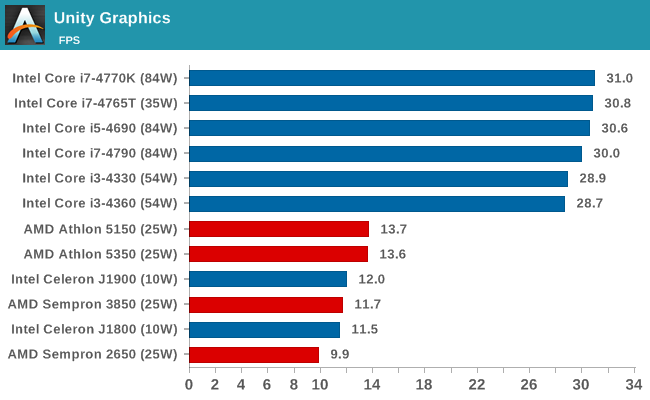
Unity – Draw Calls: link
Next up is a benchmark limited by draw calls rather than rendering complexity. The scene generates simple Nintendo Gamecube polygons that fall due to gravity and bounce around until stationary. The scene continuously spews out these polygons until three consecutive frames fall under a 20 FPS average. We run the benchmark at 720p at simple graphic settings to minimize the graphical complexity, and take the average of several runs.
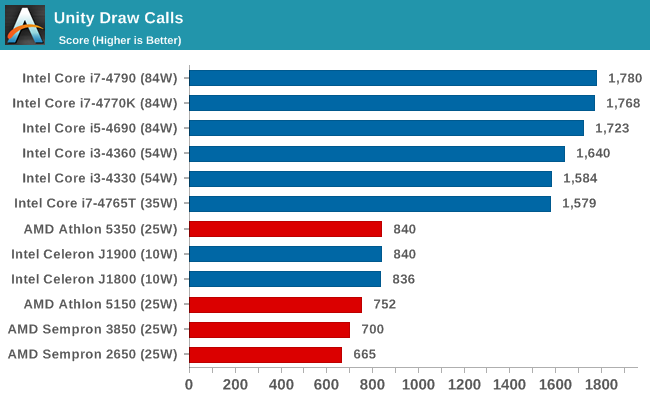
3DMark
The synthetic tools from Futuremark have been on the benchmarking landscape for over a decade, with each generation designed to tackle new problems as either the CPUs or GPUs become too powerful. Here we test 3DMark 06, 3DMark 11 (Performance), the latest 3DMark and 3DMark Vantage’s pixel/texel tests.
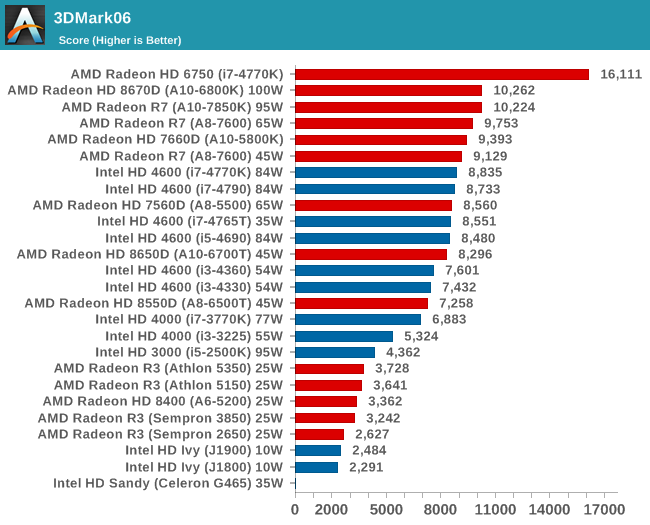
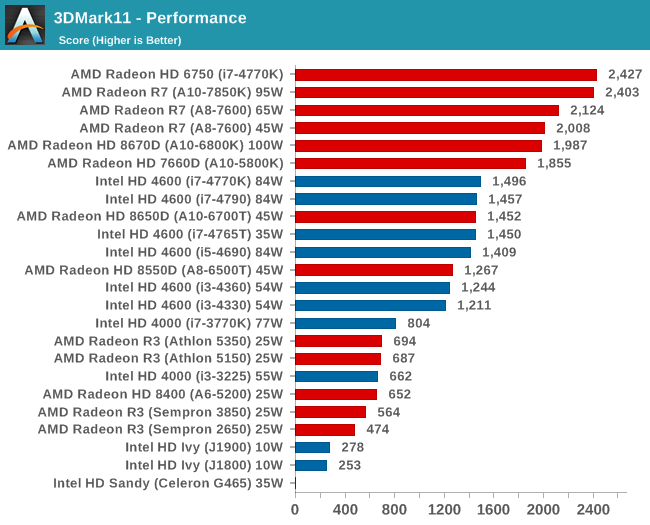
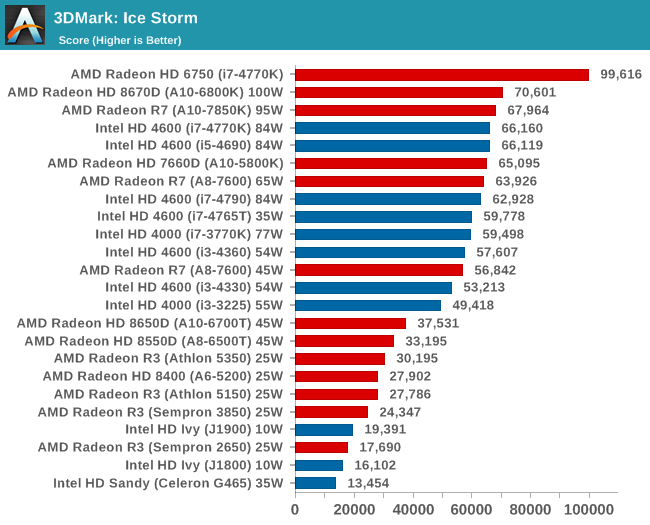

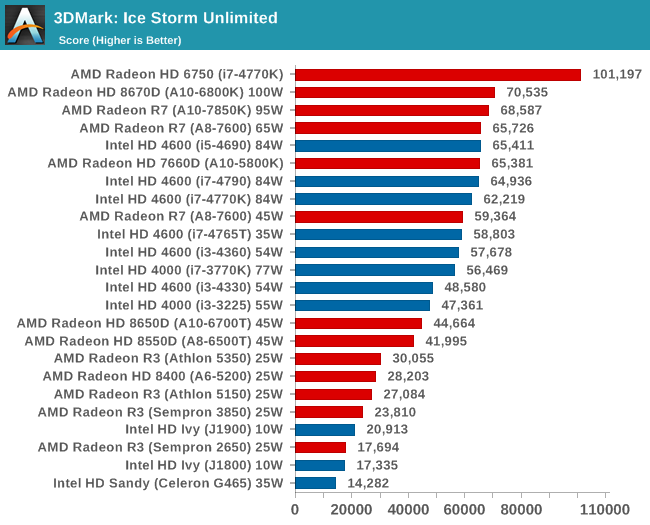
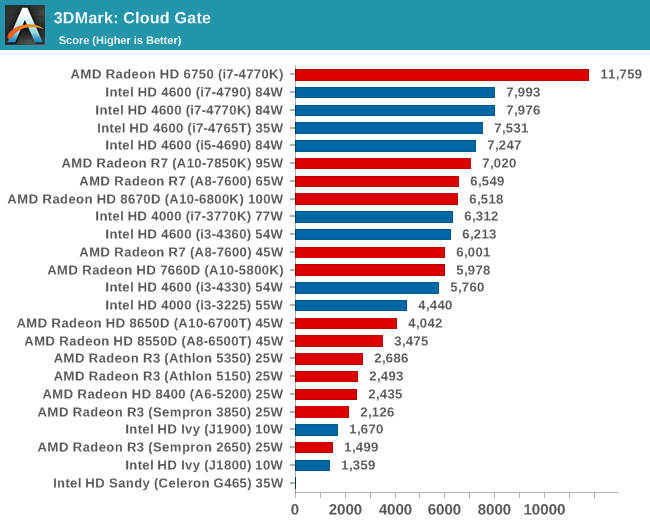
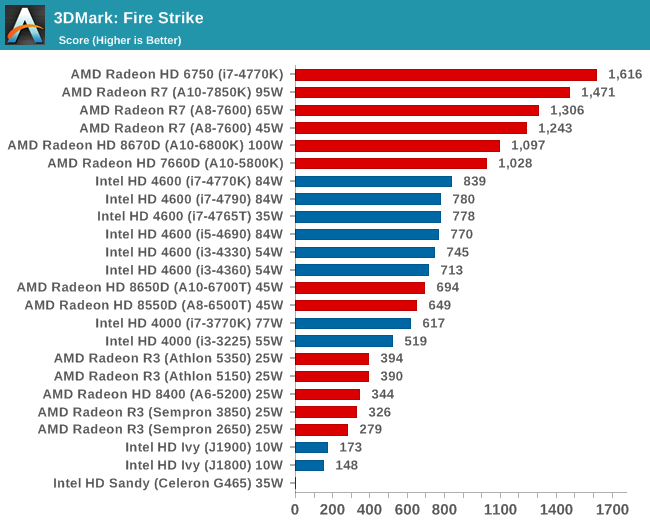

Tessmark
The latest version of TessMark is designed to focus on tessellation via OpenGL 4. We run the latest version of the benchmark using the high resolution map set at maximum tessellation while 1080p full screen, reporting the average FPS.
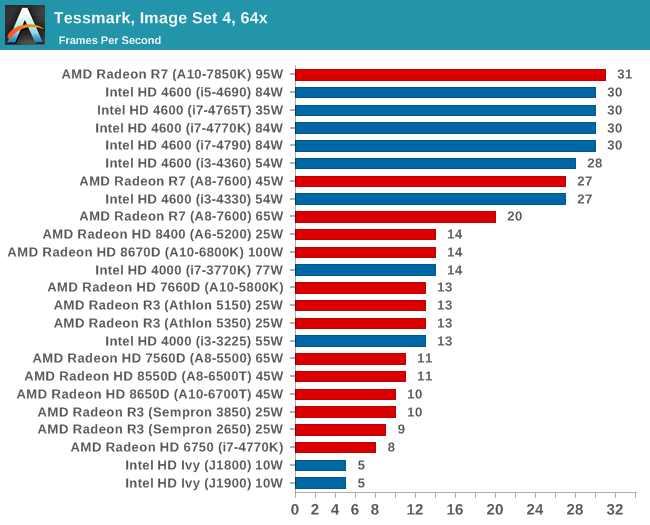










87 Comments
View All Comments
mikk - Thursday, May 29, 2014 - link
G1820 is missing or at least a cheap Haswell Pentium.hojnikb - Thursday, May 29, 2014 - link
Yes that would be really great, since those chips are price about the same.jospoortvliet - Sunday, June 1, 2014 - link
These do use far more power.On that note, why on earth doid the reviewer compare power usage over idle (never seen that particular metric at anandtech?!?) While not mentioning the idle power (according to various other sites, the amd's sport significant lower idle power). I don't like to think so but this is probably the only power metric to make the atoms look remotely good... Why was it chosen?
savagemike - Thursday, May 29, 2014 - link
I agree completely. If I were building a budget desktop right now that is exactly the chip (or similar) which I'd be comparing these to.MikeMurphy - Thursday, May 29, 2014 - link
I can buy a G3220 Haswell Pentium running at 3.0ghz for $60. I was really hoping this would make it into this review!!Stuka87 - Thursday, May 29, 2014 - link
The G3220 is a 53W chip. These are 25W chips. They do not compete with each other.HisDivineOrder - Friday, May 30, 2014 - link
Atom chips are 10W chips. These Semprons are 25W. They do not compete with each other.See how that doesn't impact the fact that people are talking about more than just wattage? ;) Some people just want to know what the best VALUE is per dollar and these low end options are all in the running.
Why limit yourself to just discussing wattage-appropriate? Especially when those Semprons are already over twice the Atom chips in terms of watts.
bsim500 - Friday, May 30, 2014 - link
"The G3220 is a 53W chip. These are 25W chips. They do not compete with each other."Intel's TDP is way overstated on its dual-cores. My "55w" i3 pulls about 32w in reality (measured at the wall, not calculated). I've seen Haswell Pentium's that are sub-30w, (full speed not the slow "T" variants). They are very definitely in the same bracket. In fact, at stock 3.4GHz, with a -0.15v undervolt, I can get my "77w" i5-3570 down from a measured 59w (1.1v) to around 47w (0.95v). At 3.0GHz at 0.83v, you're looking at 36w 4T / 25w 2T (for an i5). AMD's Kabini's are still on 28nm vs Intel's 22nm, and you'd be surprised just how low you can go with undervolting the latter's "big cores".
silverblue - Friday, May 30, 2014 - link
The point is moot as AMD is known for overvolting its processors; an article on Kabini would be very interesting.lyeoh - Sunday, June 1, 2014 - link
Which is why this article needs some actual power consumption benchmarks.